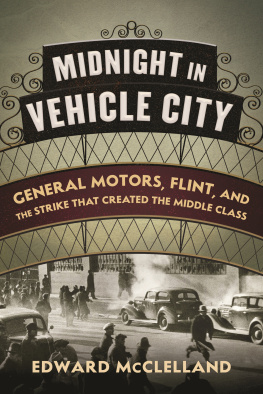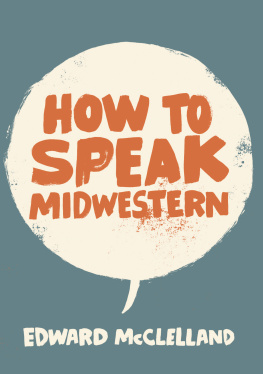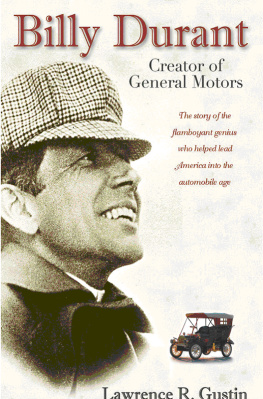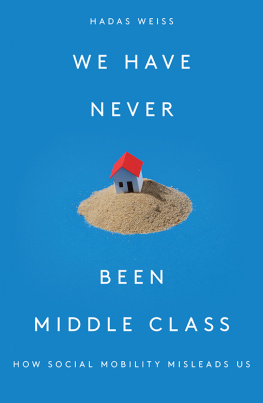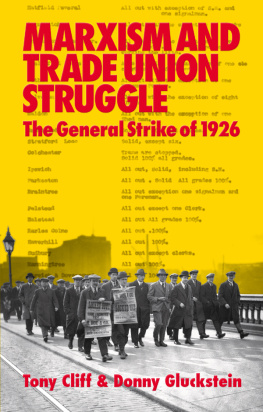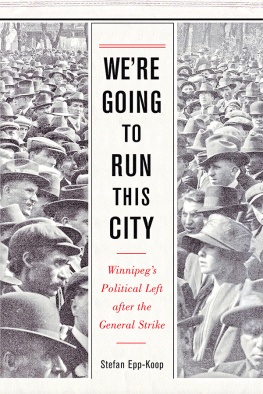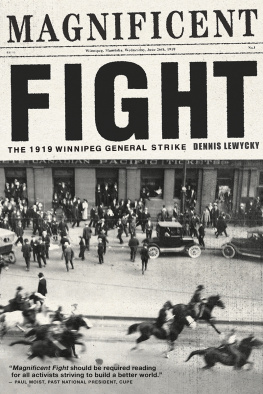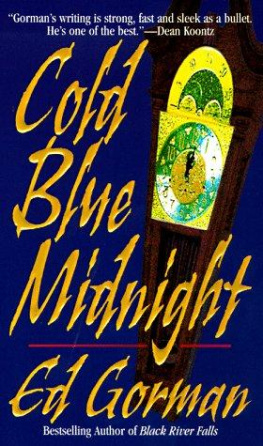Edward McClelland - Midnight in Vehicle City: General Motors, Flint, and the Strike That Created the Middle Class
Here you can read online Edward McClelland - Midnight in Vehicle City: General Motors, Flint, and the Strike That Created the Middle Class full text of the book (entire story) in english for free. Download pdf and epub, get meaning, cover and reviews about this ebook. year: 2021, genre: Detective and thriller. Description of the work, (preface) as well as reviews are available. Best literature library LitArk.com created for fans of good reading and offers a wide selection of genres:
Romance novel
Science fiction
Adventure
Detective
Science
History
Home and family
Prose
Art
Politics
Computer
Non-fiction
Religion
Business
Children
Humor
Choose a favorite category and find really read worthwhile books. Enjoy immersion in the world of imagination, feel the emotions of the characters or learn something new for yourself, make an fascinating discovery.
- Book:Midnight in Vehicle City: General Motors, Flint, and the Strike That Created the Middle Class
- Author:
- Genre:
- Year:2021
- Rating:3 / 5
- Favourites:Add to favourites
- Your mark:
- 60
- 1
- 2
- 3
- 4
- 5
Midnight in Vehicle City: General Motors, Flint, and the Strike That Created the Middle Class: summary, description and annotation
We offer to read an annotation, description, summary or preface (depends on what the author of the book "Midnight in Vehicle City: General Motors, Flint, and the Strike That Created the Middle Class" wrote himself). If you haven't found the necessary information about the book — write in the comments, we will try to find it.
Midnight in Vehicle City: General Motors, Flint, and the Strike That Created the Middle Class — read online for free the complete book (whole text) full work
Below is the text of the book, divided by pages. System saving the place of the last page read, allows you to conveniently read the book "Midnight in Vehicle City: General Motors, Flint, and the Strike That Created the Middle Class" online for free, without having to search again every time where you left off. Put a bookmark, and you can go to the page where you finished reading at any time.
Font size:
Interval:
Bookmark:

Folktales and Legends of the Middle West
How to Speak Midwestern
Nothin But Blue Skies: The Heyday, Hard Times,
and Hopes of Americas Industrial Heartland
Young Mr. Obama: Chicago and the
Making of a Black President
The Third Coast: Sailors, Strippers, Fishermen,
Folksingers, Long-Haired Ojibway Painters,
and God-Save-the-Queen Monarchists of the Great Lakes
Horseplayers: Life at the Track

To Everett Ketchum
19142013
M ORE THAN A HUNDRED YEARS AGO , a series of wrought-iron arches were erected across Saginaw Street, the main drag of downtown Flint, Michigan. They spelled out, in white letters, Flints nickname, its slogan, its reason for existence: Vehicle City. Detroit may have built more cars than Flint, but Flint was the nations transportation pioneer: first as a carriage maker, then as the birthplace of General Motors, the nations leading automaker. By the mid-1930s, the Vehicle city was even more dependent on the auto industry than the Motor City: more than three-quarters of the workforce drew a paycheck from GM or one of its suppliers.
William Crapo Durant, the man who would one day found General Motors, the largest corporation in the history of the world, got into the transportation business by building horse-drawn buggies. Durant was a scion of the industry on which Flint, Michigan, had been founded: lumbering. His grandfather, Henry Howland Crapo, was a New England schoolteacher who gambled on the purchase of a $150,000 tract of Michigan pineland, won, and became so wealthy and respected that he was elected governor in 1864, only ten years after his arrival to the state. At the lumber industrys zenith, Flints mills were sawing ninety million feet of virgin jack pine a year. By the end of the 1870s, though, the forests of the Flint River Valley were so depleted that the lumber kings began casting about for a new industry to save the town from economic devastation. They settled on horse-drawn vehicles.
Durant paid two thousand dollars to buy out a buggy maker. He moved the company to Flint, renamed it the Flint Road Cart Company, and was soon producing four hundred two-wheeled sulkies a day in a shop down by the Flint River. By the turn of the century, Flint was turning out more than a hundred thousand horse-drawn conveyances a year, more than any other city in the nation. The Vehicle City arches were erected to celebrate this distinction in 1901, just as the horse- and steam-powered nineteenth century was giving way to the gasoline-powered twentieth. Even as Flint was touting itself as the worlds leading producer of buggies, wagons, and carriages, there was a feeling among its forward-looking citizens that the Vehicle City was building the wrong vehicles. Elsewhere in Michigan, Detroits Henry Ford and Lansings Ransom Eli Olds had already designed the cars that would bear their names, but the only motor car in Flint, assembled by a judge in his carriage house, was such a feeble machine that it stalled trying to drive over the raised wooden crosswalks of downtown intersections.
The Flint Wagon Works, a rival of Durants, spent ten thousand dollars to purchase the creation of a Detroit tinkerer named David Dunbar Buick: the Model A, the first automobile with a valve-in-head engine. As part of the deal, both the Buicks assembly and Buick himself moved to Flint.
Flint is the most natural center for the manufacture of autos in the whole country, the Flint Daily Journal wrote in an editorial celebrating the transaction. It is the vehicle city of the United States and in order to maintain the name by which it is known from ocean to ocean there must be developed factories here for the manufacture of the automobile.
The buyers asked Durant to run Buick, impressed that he had built Flint Road Cart from a two-thousand-dollar investment to an enterprise bringing in two million dollars a year. The horse-and-buggy man was not a fan of automobiles, but a country drive in a Buick convinced Durant it was a capable machine, only rarely defeated by ruts or mud. Also, pedestrians wanted a closer look at the car, which appealed to his salesmans instincts. Believing it his civic duty to take part in Flints next big thing, Durant signed on.
Setting up shop in the old Flint Wagon Works, Buick built forty cars that first year. By 1906, the automaker had outgrown the wagon shop and moved into a new three-story plant on an old North End farm, along a newly laid-out street named Industrial Avenue.
Durant, who loved the Big Deal, saw the automobile as his ticket to becoming an industrial titan as wealthy and influential as Andrew Carnegie. To achieve that goal, he decided to organize an auto trust of all the major manufacturers, based on the model of Carnegies United States Steel. On September 16, 1908, the Buick and Oldsmobile companies merged by means of a stock swap to form the General Motors Corporation. Durant had also approached Henry Ford, but the cantankerous engineer wanted cash rather than stock. The ambitious Durant quickly acquired a third auto company, located in Pontiac; then, feeling he had to add a Detroit automaker to his portfolio, he paid $3.5 million for the Cadillac Motor Company. The classic GM five-brand lineup became complete in 1917, when Durant brought in a model founded by a mustachioed Swiss auto racer named Louis Chevrolet. The Chevrolet Royal Mail, a $750 four-cylinder roadster, was neither as cheap nor as popular as Fords Model T, but the masses bought it nonetheless, and it established Chevrolets future position as the bottom rung of GMs price for every purse brand ladder.
Flint, which had begun the first decade of the century with a single hand-assembled motorcar, was by that decades end the Second City of the auto industry, behind only Detroit. In 1910, one out of every six automobiles sold in the United States was a Buicka total of 30,525 cars.
The demand for Buicks meant a demand for workers to build Buicks. In the 1900s Flints population tripled, from 13,103 to 38,550, making it the fastest-growing industrial city in the nation. The plants were so desperate for workers they dispatched agents to the rural South, offering train tickets to Flint (the offer was discontinued after hobos figured out it was a free ride). Flint was so overwhelmed with young men leaving their farms to build cars that the old sawmill settlement had nowhere to house them. Boarding house keepers rented beds in shiftssometimes requiring men to sleep doublebut even so, at least a thousand autoworkers were unable to find indoor accommodations. The homeless men set up camps along the river, or in the woods, within walking distance of the shops. They lived in piano crates, or railroad cars, or pitched tents, forking over a Liberty dime every week to shower at the Flint Vehicle Factories Mutual Benefit Association, where they could also amuse themselves in the gym, library, billiard room, or bowling alley. One well-to-do crate dweller had a four-hundred-dollar dining set delivered to his residence.
With so much money flowing through the hands of so many single men, Flint was a Wild North boomtown. Saginaw Streets weekly highlight was no longer Saturday-morning market day but Saturday-night payday. Flint autoworkers earned an average of $2.61 a day, the highest industrial wage in Michigan, and plenty of them spent the checks as soon as they could cash them.
Font size:
Interval:
Bookmark:
Similar books «Midnight in Vehicle City: General Motors, Flint, and the Strike That Created the Middle Class»
Look at similar books to Midnight in Vehicle City: General Motors, Flint, and the Strike That Created the Middle Class. We have selected literature similar in name and meaning in the hope of providing readers with more options to find new, interesting, not yet read works.
Discussion, reviews of the book Midnight in Vehicle City: General Motors, Flint, and the Strike That Created the Middle Class and just readers' own opinions. Leave your comments, write what you think about the work, its meaning or the main characters. Specify what exactly you liked and what you didn't like, and why you think so.

